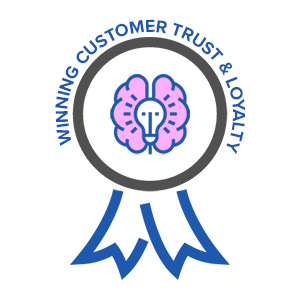In today’s noisy marketplace, it’s not enough to have the best widget. Consumers are looking for brands that can do more than solve their problems. Increasingly, consumers want to buy from trusted advisors, and establishing that trust in the market and in the buyer’s mind takes time—and meaningful content. In this blog post we’ll explore what kind of content constitutes thought leadership, best practices on creating it, and how to use it to earn trust and loyalty in the marketplace.
Why it matters
Our economy is increasingly hinging on the buying and selling of experiences. For any company, whether you’re in software or services or both, people will want their interactions with your brand to be positive, helpful, and maybe even delightful. Thought leadership is a critical, consumer-centric touch point with your marketplace. Your audience needs advice and understanding, and you get to anticipate their questions and serve up the answers, probably before they even know who you are. You will help them navigate their challenges, and in doing so, win them over before they’ve even made a purchase.
What it is – and isn’t
Thought leadership is giving away knowledge for free – teaching and sharing advice just for the sake of passing it on, in any medium from a white paper to a bylined article to a video or infographic. Its goal is not to sell per se, but to endear consumers to your brand by delivering something genuinely beneficial to them. If you are a go-to resource about a topic important to them, when they need a solution in that or an adjacent area, it’s natural that they will turn to you for a solution.
The trick to creating this kind of relationship is not to talk about yourself or your products. That’s right – you can’t be explicitly salesy in a piece of thought leadership – that’s advertising, something we’ve all learned to tune out. As a good rule of thumb, thought leadership should have no mention of your brand or product name, but should rather serve to make you and your brand look smarter.
So how do you determine what to be a thought leader on?
Sharing the right message – backed by data
Step one is to know your audience. What are their challenges and aspirations? How do they consume information? These are the people you want to reach with the right tidbit of insight at the right time. Then you need conviction behind what you’re talking about – try to come up with an overarching theme that challenges the status quo while underlining your company’s raison d’etre.
At Sage, we tap into the market’s needs on behalf of our clients through quantitative and qualitative interviews. By asking the market what’s on their mind directly, we help our clients engineer thought leadership that fills a need. This doesn’t necessarily have to be net-new thinking, but it should be a spin on the issue that taps into your company’s unique perspective. The more provocative you can make it, the better – helping people see an issue differently is an opportunity for them to see your company as the solution.
Leveraging data to support your point of view gives it credibility, which is where our team taps back into that quantitative and qualitative research. Conducting a listening tour of your audience on critical topics allows you to serve those insights back to them so they can see what their peers are thinking and feeling. Secondary research from existing studies can also be helpful in bolstering your assertions.
Getting it in front of the right people
At the same time you’re planning your piece of thought leadership, you should be planning a distribution strategy – but that’s a topic for another time. Thought leadership might involve giving away knowledge for free, but that isn’t to say you can’t get something in return – that may be through something tangible, like a promoted lead generation campaign, social media push, or email marketing. But it may be something more intangible and more valuable—elevating your brand’s trust and reliability in the mind of your target audience.
We hope this article has helped clarify the value of thought leadership, what it is and isn’t, and how to start shaping your own. Have questions? Reach out to us at marketing@sage-growth.com.






